Are you curious about how recycling works in the Big Sky Country? Well, you’ve come to the right place. In this article, I’ll be your guide, taking you through the ins and outs of recycling in Montana.
I understand your pain points when it comes to recycling. The overwhelming feeling of not knowing where to start or the fear of making a mistake can be daunting.
But worry not, my friend, because I’ve been studying and researching this topic for quite some time now. With my expertise, I can help you navigate the recycling landscape with ease.
Whether you’re a seasoned Montanan recycler or a newbie looking to make a positive impact, I’ve got you covered. Montana is not only known for its breathtaking scenery but also for its dedication to recycling.
- Related article: Living the Montana Way
Together, we’ll explore the recycling facilities, programs, and initiatives that make Montana a champion in sustainable living.
By the end of this article, you’ll be armed with all the knowledge you need to become a recycling superhero in your own community.
Now, are you ready to make a difference? Let’s get started!
Recycling in Montana: Its Current State
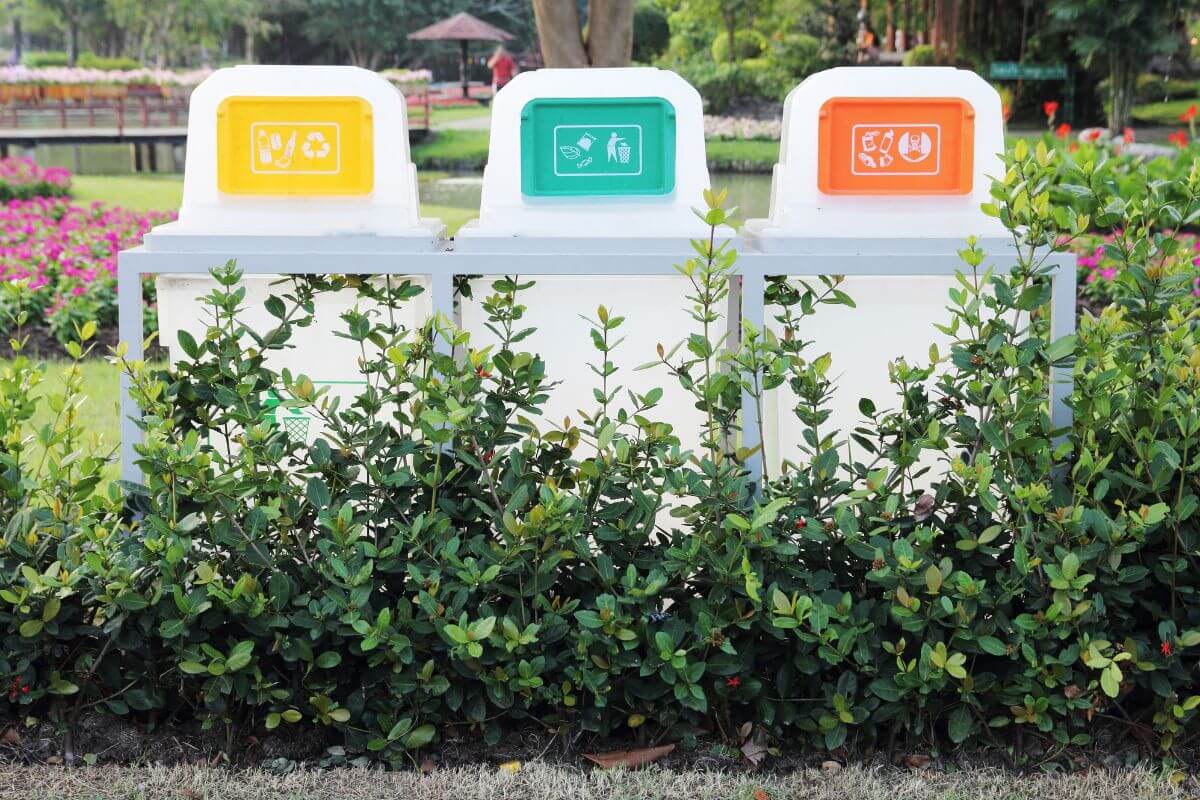
Recycling in Montana is a thriving and vital aspect of our state’s commitment to sustainability.
The Montana Department of Environmental Quality (DEQ) plays a crucial role in supporting and promoting recycling efforts across the state.
Under the Waste Management and Remediation Division of the DEQ, several key programs are in place to protect human health and the environment. These are:
- Hazardous Waste Management – The Hazardous Materials Section is responsible for regulating storage, treatment, transport, and disposal of hazardous waste and used oil for all hazardous waste handlers in the state.
- Motor Vehicle Wrecking and Disposal – Montana was one of the leading states to enact junk vehicle legislation. Its primary purpose is to prevent junk vehicles from being scattered throughout the countryside by recycling them.
- Solid Waste Management – The Montana DEQ regulates solid waste facilities and community recycling, encompassing municipal landfills, construction waste sites, septic tank land application, motor vehicle recycling, and recycling programs.
- Underground Storage Tanks – Underground Storage Tanks (USTs) safeguard human health and the environment by preventing the release of harmful substances. These releases can jeopardize groundwater and create explosive vapors in confined spaces and homes.
- Recycling – DEQ’s Recycling program helps Montana residents, businesses, and government agencies prevent pollution by offering information and technical support on environmental issues like waste reduction, recycling, pollution prevention, and sustainability practices.
Montana’s current state of recycling is a testament to its commitment to protecting our environment and preserving our natural landscapes.
Montana Recycling Benefits

Recycling is not just a trendy notion; it’s an essential part of our commitment to preserving the beauty that surrounds us.
By embracing recycling practices, we not only reduce waste and conserve precious resources, but we also stimulate the local economy.
Enumerated below are some economic advantages of recycling in Montana:
| Economic Advantage | Description | Actual Montana Practices |
| Turns Waste Into Valuable Raw Materials | Establishments are currently able to sell recycled and reused goods in Montana | 3 Montana companies sell Plum Creek Lumber Company’s medium-density fiberboard made from sawdust and shavings |
| Creation of Jobs | Recycling creates strong job growth and opportunities for entry-level and mid-level workers, and can replace jobs lost in other sectors | In 2003, the industry paid over nine million dollars in wages and benefits to approximately 300 full-time and 40 part-time employees |
| Lowers Production Costs | Recycling product materials, rather than harvesting and processing raw materials from the earth, can lower or reduce the energy cost of production | Montana companies sell toner cartridges that can be remanufactured after use. |
From repurposing materials to reducing production costs, the benefits of recycling in the state extend far beyond the surface.
So let’s join hands and embark on this journey of preservation, one recycled material at a time.
Montana Recycling Environmental Advantages
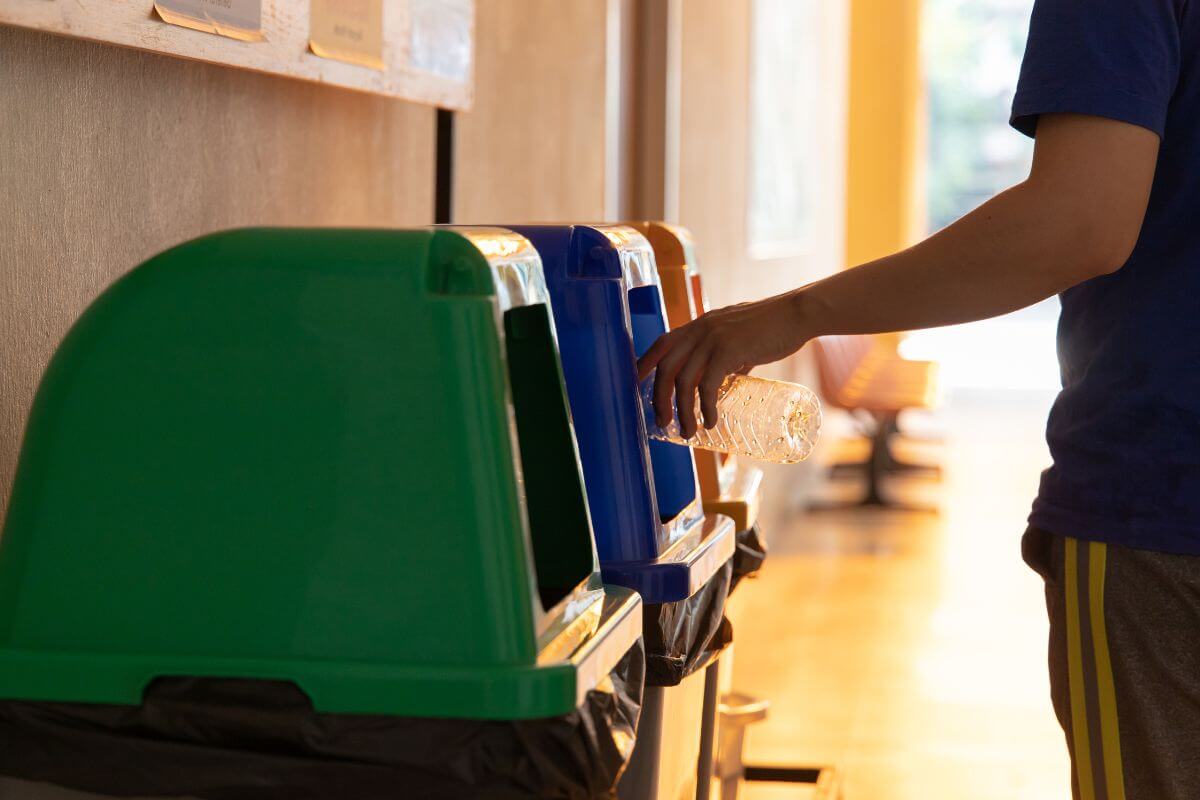
Recycling plays a crucial role in creating a sustainable future for Montana. Here are some examples of how this simple act is able to have such a big impact on the environment:
- Reduces Landfill Waste – Recycling spares several cubic yards of valuable land from being filled with discarded materials and therefore conserves natural resources. There is also a decreased chance of leaching harmful substances into soil and water.
- Conserves Natural Resources – The state of Montana is known for its breathtaking landscapes and with recycling, the preservation of natural resources is made possible for generations on end.
- Energy Conservation – Recycling will not require the extraction of new raw materials and instead uses existing ones to create new ones. That also means less energy and resources are used for production.
- Pollution and Greenhouse Gas Emission Reduction – Consequently, when production is lessened, greenhouse gas emissions released are also minimized. This is highly crucial in mitigating climate change during these times.
Montana’s wildfire risk also poses a threat to residents, as wildfires become more common in the state. This can be caused by the improper disposal of flammable materials in the environment.
Recycling is one way to help avoid such environmental risks as it reduces pollution and is essential for addressing climate change.
Let’s continue to embrace the power of recycling and be stewards of our beautiful state. Together, we can make a difference.
Montana Recycling Guide
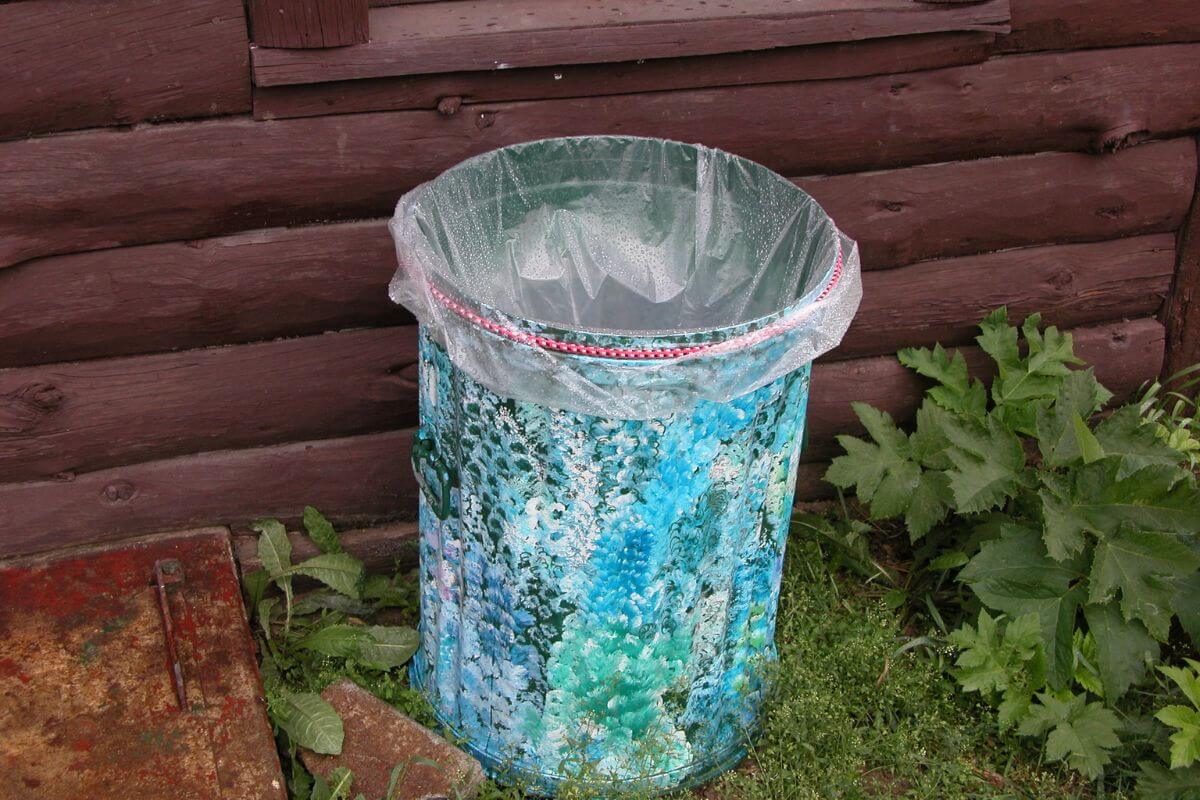
Montana has a robust recycling program that not only benefits the environment but also the economy. So let’s dive into this recycling guide and discover how we can all do our part to keep the state beautiful.
What Can You Recycle in Montana?
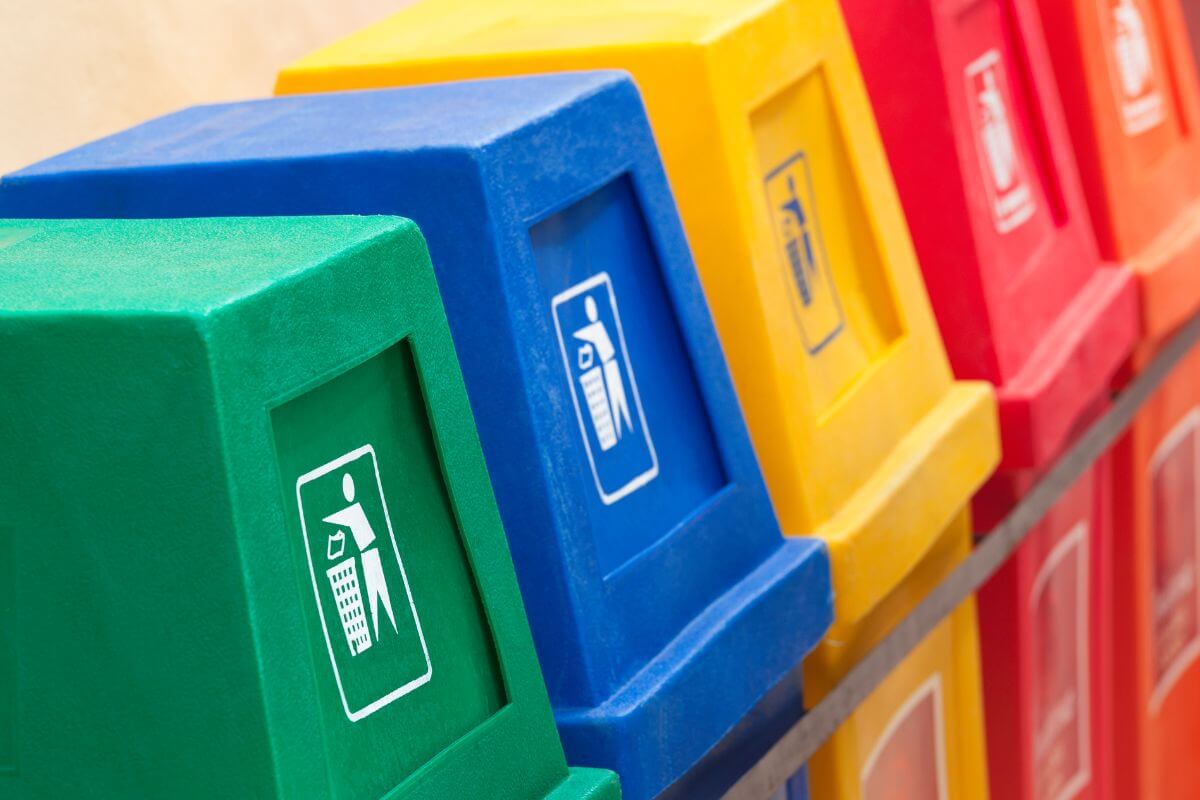
In Montana, recycling is a serious business. Montanans sort their waste into 3 distinct bins: one for paper, one for metal, and one for plastic.
- Paper Bin – These bins include newspapers/inserts, magazines, home office paper (white/pastel), BAGGED shredded paper, copy/fax paper, post-it notes, white envelopes, and paper ream wrappers
- Metal Bin – Metal bins include aluminum cans, and steel or tin cans
- Plastic Bin – Plastic bins include all Type 1 and Type 2 plastic containers accepted: plastic bottles, milk jugs, pop/water/juice bottles, and laundry detergent bottles. Make sure it has a recycling symbol with a 1 or 2. Lids should be removed.
Other materials:
- Corrugated or Non-corrugated Cardboard – Moving/mailing boxes, clean cardboard egg cartons, cereal boxes, pop/beer cartons, and any thin cardboard must be flattened.
- Glass – Glass is 100% recyclable but the state encourages everyone to reuse it instead.
Glass recycling brings many challenges to Montana because of its low population.
This works against the state as they do not generate “enough” glass to lure glass bottling plants to the state.
There is also not enough production of consumer glass bottles for the state to be an effective source for a full-scale recycling program. Transportation costs are also a big consideration.
Montana does not limit it to these materials only as you can also recycle ink cartridges, cell phones, tires, light bulbs, and even electronics but there are certain pickup schedules and drop-off locations to follow for these.
What Can You Not Recycle in Montana?
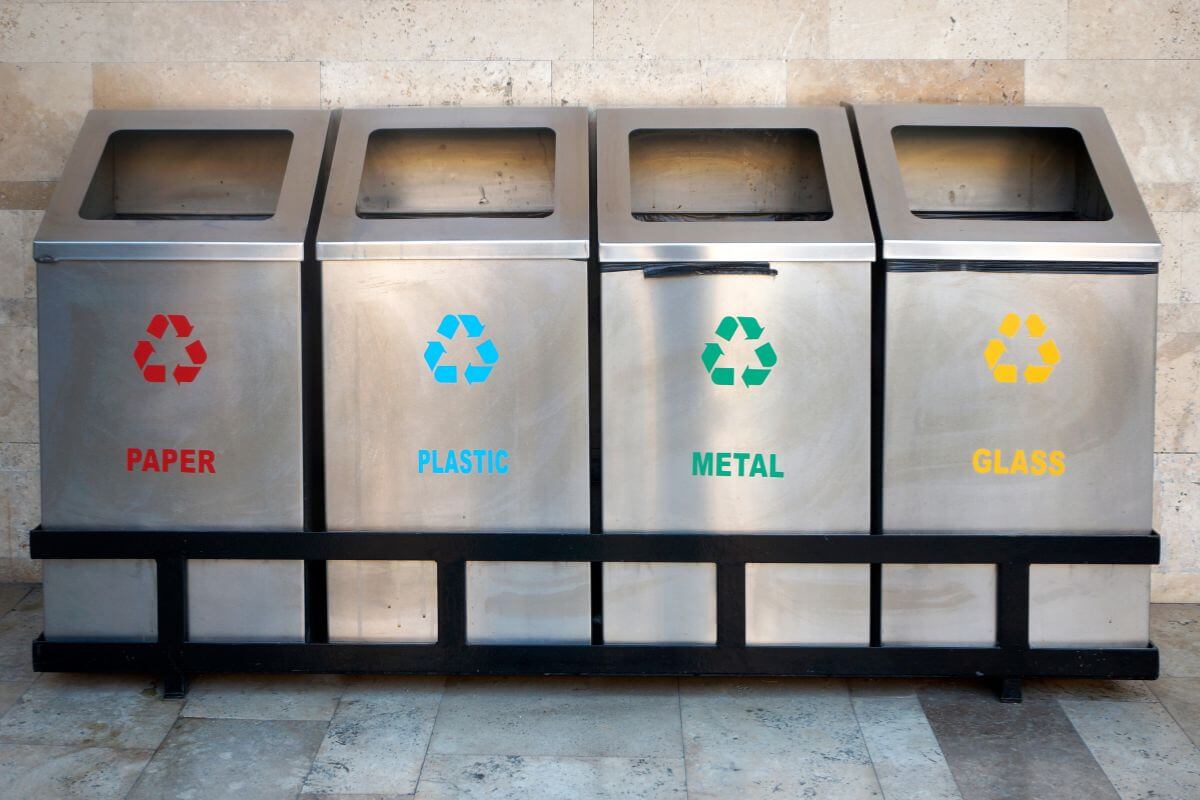
When it comes to recycling in Montana, there are certain items that cannot be tossed into those beloved recycling bins. These are:
- Paper Bins – These bins should not include tissues/tissue paper, food wrappings, paper towels, soiled/food stained paper, hardback book bindings, construction paper, wrapping paper and dark colored office paper, phone books, manila envelopes, and file folders
- Metal Bins – Metal bins should not include bottle caps, aerosol cans, paint/solvent containers, and scrap metal
- Plastic Bins – Plastic bins should not include Type 3-7 plastics like butter and yogurt containers, plastic caps or lids, styrofoam, plastic bags, wrappers, zip lock bags, bread bags, etc. No bags of any kind.
- Soiled Cardboard – These include oily pizza boxes, milk cartons, and paper cups.
Remember, when it comes to recycling, it’s crucial to follow the guidelines and keep these unacceptable items out of the recycle bin. Let’s do our part to protect the environment and keep Montana beautiful.
Montana’s Other Recycling Reminders
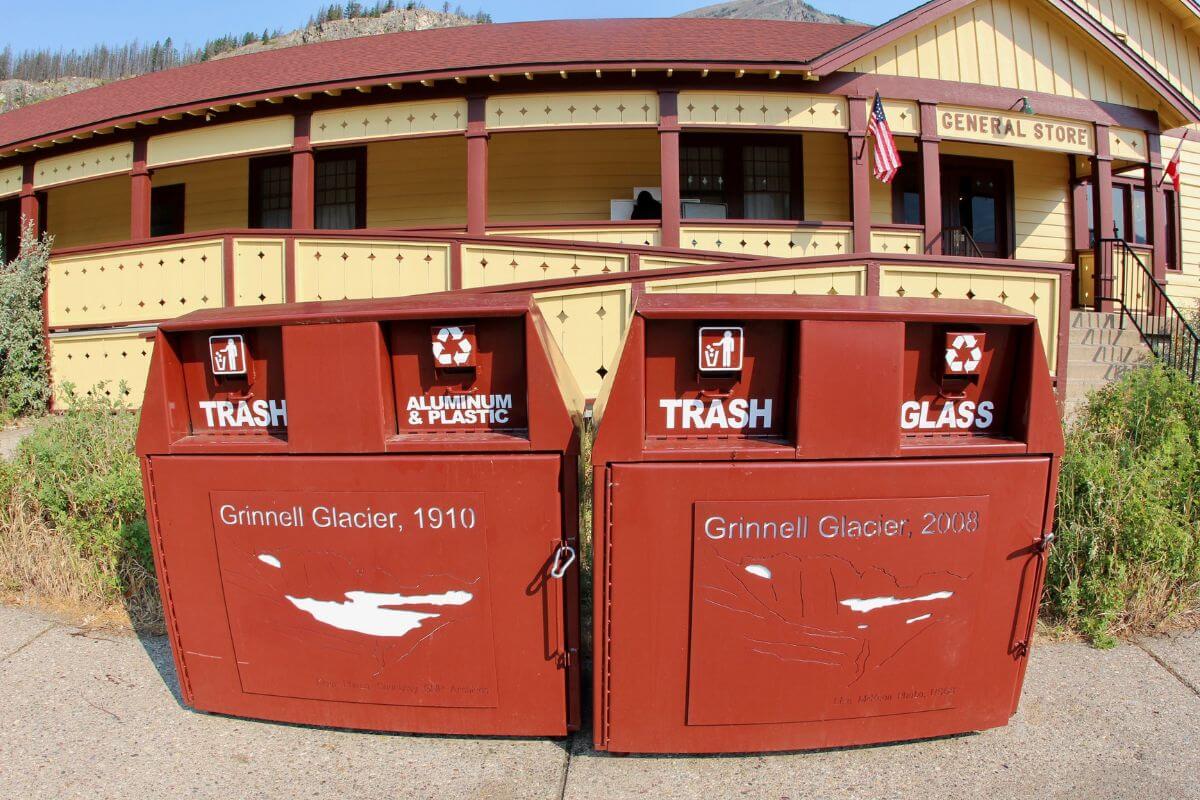
When it comes to recycling in Montana, there are a few additional reminders that can help us all do our part.
Firstly, it’s important to rinse out all recycled containers before placing them in the appropriate bin. This ensures that there is no leftover food waste that can contaminate the recycling process.
Furthermore, whenever possible, it’s recommended to flatten all recyclable containers. This not only saves space in the recycling bin but also helps in the efficient transportation and processing of the materials.
When it comes to cardboard, it’s crucial to flatten all cardboard boxes. Non-corrugated cardboard, like cereal boxes, should not be placed with your regular paper recycling. Instead, it should be placed in a separate box or container to be recycled properly.
Another important reminder is to remove all lids from containers before recycling them. Lids can often be made from different materials that may not be recyclable, so it’s best to separate them and dispose of them appropriately.
Lastly, it’s always important to remember that hazardous waste should not be placed in the regular recycling bins.
Items such as batteries, paint, and chemicals should be disposed of at designated locations to ensure proper handling and disposal.
By keeping these additional recycling reminders in mind, we can all contribute to a more sustainable future. Let’s continue to do our part and make recycling a breeze.
Montana Recycling Facilities
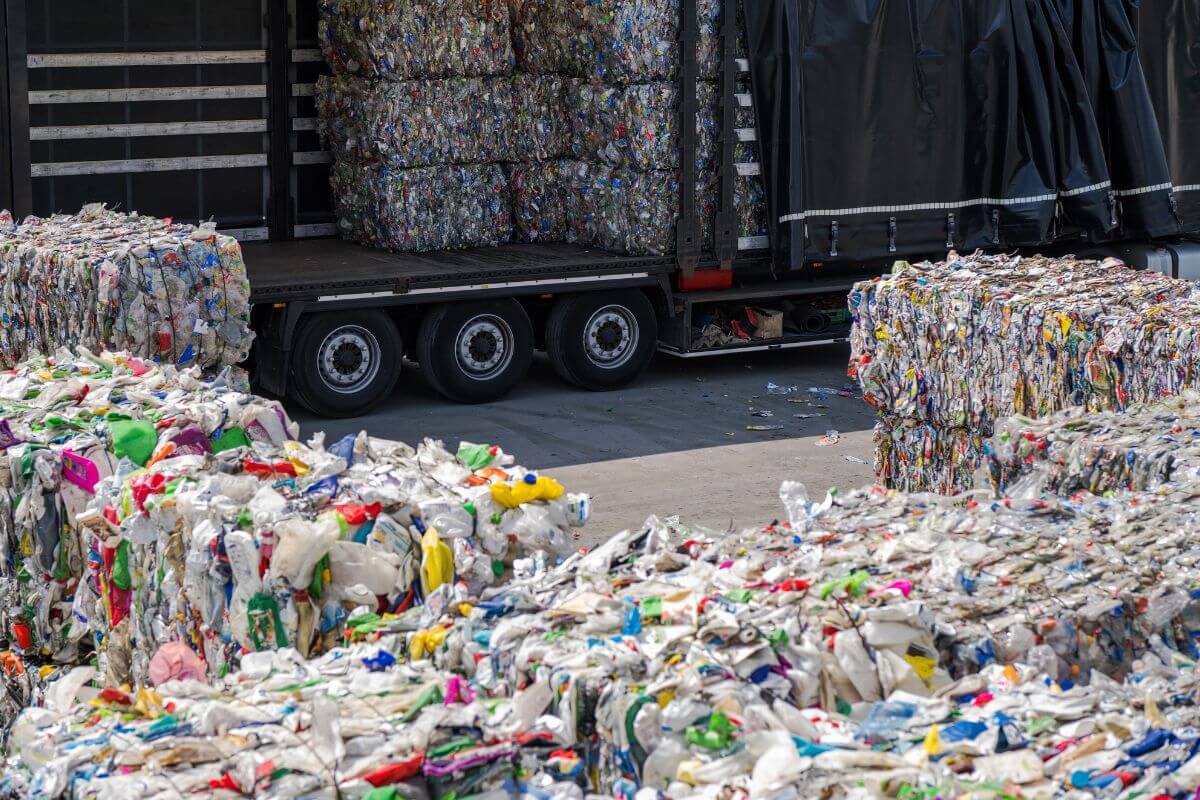
When it comes to recycling in Montana, there are several organizations and facilities that individuals, businesses, nonprofits, and government agencies can turn to for support.
Listed below are some of the recycling facilities that you can choose from:
| Recycling Facility | Location | Recyclables Taken |
| We Recycle Montana | Bozeman | Batteries, Metal, Cardboard, Paper, Plastic #1 & #2*, Bayern Ecopack, Cooking Oil |
| Pacific Steel and Recycling | Billings | Batteries, Metal, Cardboard, Paper, Auto Fluids |
| Gallatin Solid Waste Management District | Amsterdam/Churchill | Metal, Cardboard, Paper, Plastic #1 & #2* |
| Anaconda-Deer Lodge Landfill | Anaconda | Metal, Electronics, Tires |
| Augusta SW Management District | Augusta | Metal, Cardboard, Paper, Plastic #1 & #2*, Electronics, Glass, Wood & Lawn Waste |
| Baker Metal & Recycling | Baker | Metal, Appliances |
| Jefferson County Solid Waste | Basin | Batteries, Metal, Wood & Lawn Waste, Auto Fluids |
| Happy Trash Can | Belgrade | Kitchen Compost |
| City of Big Timber | Big Timber | Batteries, Metal, Cardboard, Paper, Plastic #1 & #2*, Wood & Lawn Waste |
| Billings Regional Landfill | Billings | Alum, Cardboard, Paper, Electronics, Wood & Lawn Waste, Auto Fluids |
Montana’s Recycling Efforts
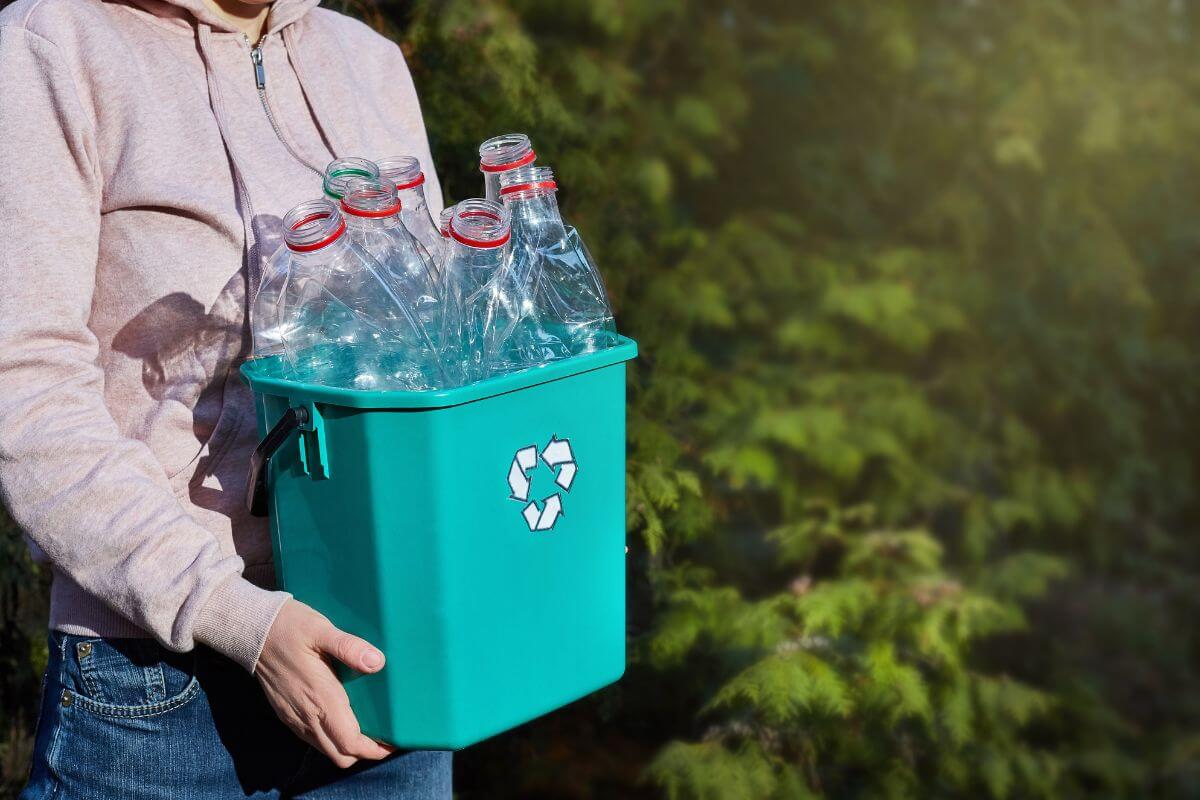
Apart from the efforts of the state’s DEQ Recycling program, Montana is taking strides in its recycling efforts to reduce waste, conserve resources, and mitigate the impact on landfills. Take a look at the state’s other efforts:
- Montana Integrated Solid Waste Management Plan (IWMP) – This plan is responsible for reducing solid and hazardous wastes in Montana through source reduction, increased reuse, recycling, and composting as well as finding creative ways to market wastes as materials and commodities.
- Pay-As-You-Throw (PAYT) – This effort provides a fee-for-service system that allows residential and commercial customers to pay for the amount of waste they produce instead of paying a fixed fee or tax for solid waste services.
- The State of Montana Recycling Program – This program provides state agencies with access to comprehensive recycling of common items and materials. It utilizes multi-compartment bins that are optimally placed in buildings in and around the Capitol Complex.
- General Services Division and Helena Recycling Schedules – These 2 organizations joined hands to provide bi-weekly recycling pick-ups for office paper, cardboard, aluminum, tin, glass, wood pallets, and plastics. At this time only plastic types 1 and 2 are being accepted.
Montana Recycling Final Thoughts
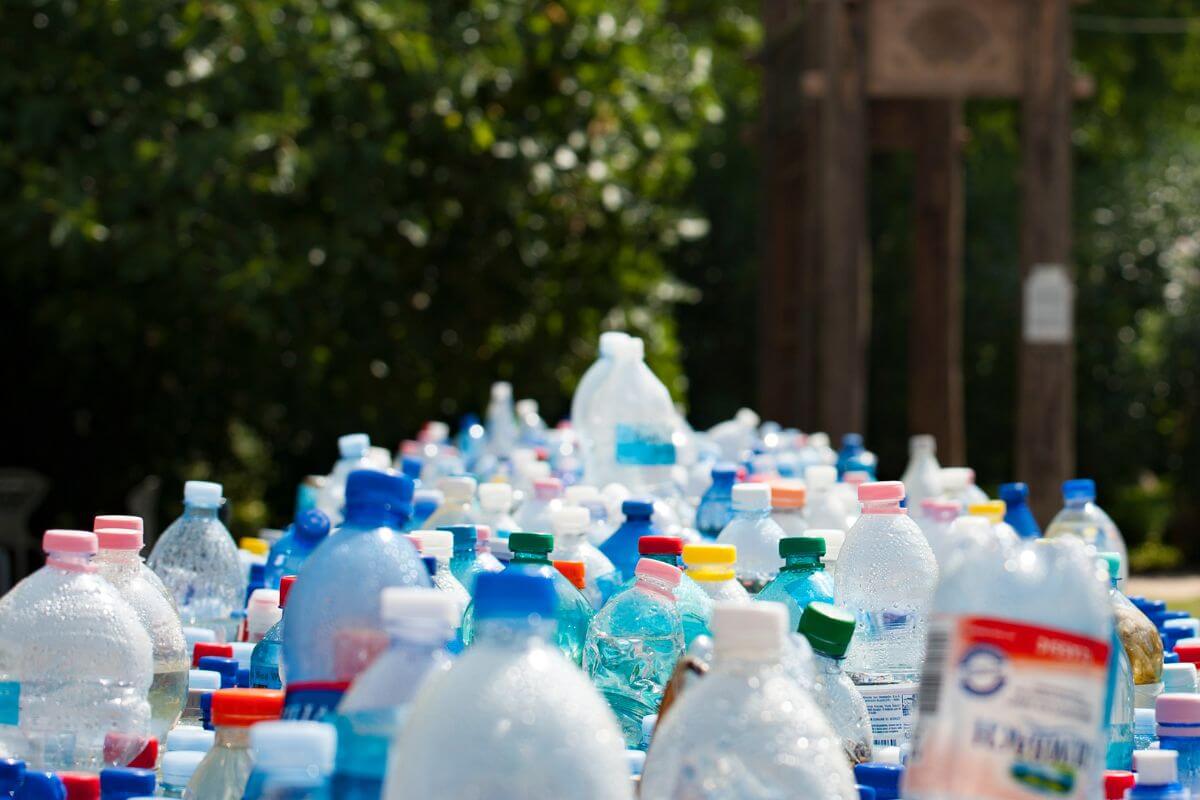
It is clear that Montana is making significant strides toward waste reduction and sustainability.
It’s promising to see the state’s Department of Environmental Quality supporting these efforts and working to educate the public about the importance of recycling.
Major recycling facilities such as Pacific Steel and Recycling and programs like DEQ’s Recycling Program provide valuable resources for proper waste disposal and ensure that waste diversion from landfills is maximized.
Education and support play crucial roles in encouraging individuals and businesses to adopt recycling practices.
By offering accessible and convenient recycling options, Montana is setting an example for other states to follow. The commitment to sustainability and recycling common items are steps in the right direction.
By continuing to prioritize recycling and sustainability, the state is leading the way in creating a more eco-friendly society.
Montana Recycling FAQs
1. What Is Recyclable in Montana?
Different counties and cities in Montana may have varying recycling standards, but there are certain materials that are commonly recycled and accepted across the state.
These include newspapers or inserts, magazines, home office paper, post-it notes, white envelopes, paper ream wrappers, aluminum cans, steel cans, and Type 1 and Type 2 plastic containers.
However, it’s important to note that other materials may have specific rules and guidelines for recycling.
2. Does Montana Recycle Plastic?
Not all locations in Montana accept all types of plastics.
It’s important to check with your particular county or city to see their specific policies on plastic recycling. So, next time you’re ready to toss that plastic bottle or container, take a moment to find out if it can be recycled in your area.
3. Does Montana Pay For Recycling?
Yes, some recycling facilities in Montana, such as “We Recycle Montana,” will purchase your scrap metals and pay the current local commodities rate.
However, it’s important to note that this may not be the case for all recycling centers in the state.
4. What U.S. State Is Best at Recycling?
According to a recent survey conducted by the O.Berk Team, the best state at recycling in the U.S. is Maine.
An impressive 74% of the state’s waste is recycled, making it a true champion in the realm of sustainability. Maine also takes the lead when it comes to recycling per resident, with an average of 285 pounds of waste recycled per capita.
5. Why Doesn’t Montana Recycle Glass?
The reason why Montana doesn’t recycle glass in all parts of the state is actually quite straightforward.
Montana has a low population and density, which means they simply don’t generate enough glass to make it economically viable for pickup, recycling, and transport.
Interested to find out more about The Treasure State that is Montana? Then check out these other great articles now:
- Montana Grocery Liquor Offerings
- Montana’s Sales Tax Status
- Montana Homestead
- Safe Living in Montana
- https://lbre.stanford.edu/pssistanford-recycling/frequently-asked-questions/frequently-asked-questions-benefits-recycling
- https://gsd.mt.gov/CFM/Recycling-Program
- https://gsd.mt.gov/CFM/CFM_PDFs/whatsrecyclableforbusiness.pdf
- https://dc.statelibrary.sc.gov/bitstream/handle/10827/39327/DHEC_FYI_Economic_Benefits_2009-09.pdf
- https://deq.mt.gov/files/Land/Recycle/Documents/docs/EEIRinMT.pdf
- https://deq.mt.gov/twr/Programs/recycling
- https://commons.wikimedia.org/wiki/File:2003-08-17
- https://www.flickr.com/photos/daveynin/37318336761

